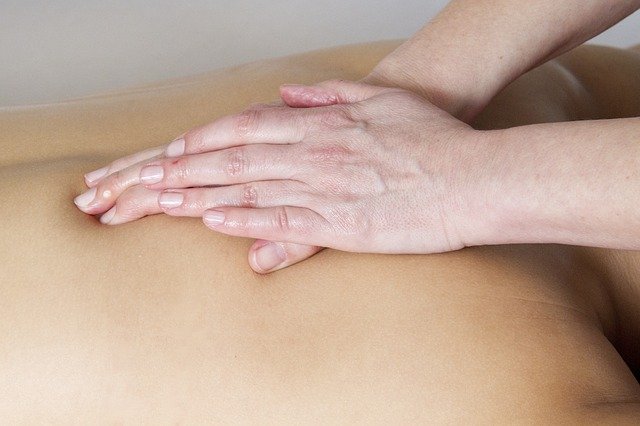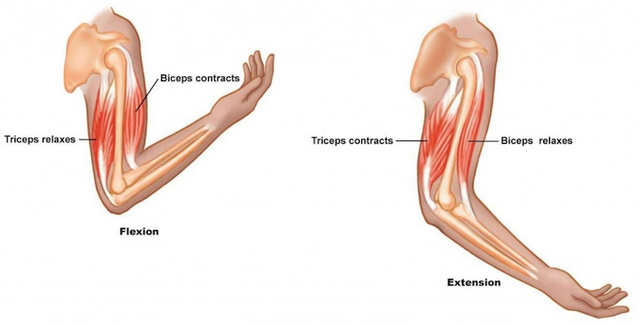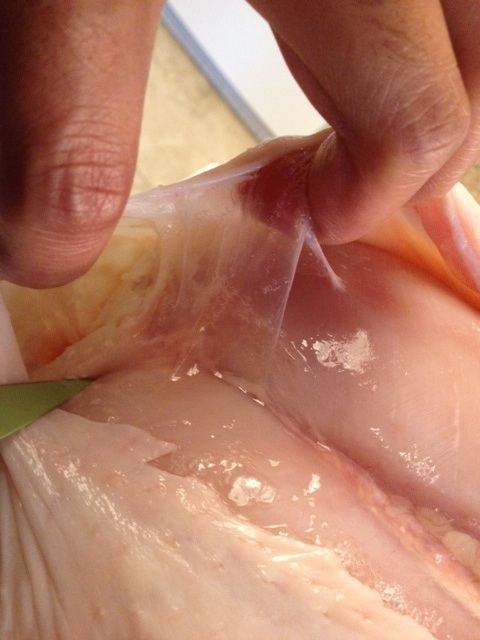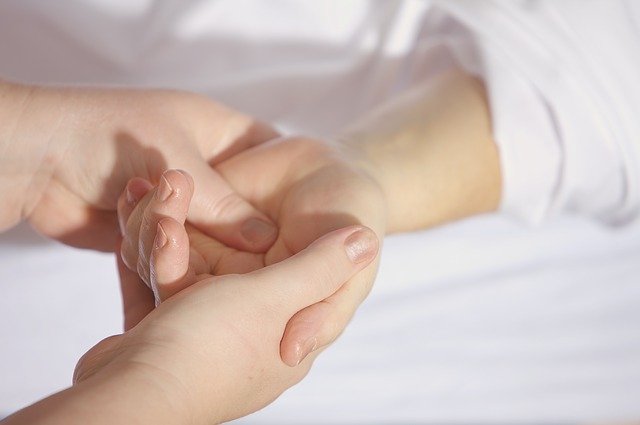Why Do I Hurt: The Importance of Massage
Every aspect of life is improved when you feel healthy, which is one reason we love sharing the sustainable options we know and utilize for wellness.
Today, we bring you an article on pain and the importance of massage.

Your body is a miraculous system of interconnected elements designed for strength, fluid motion, and longevity. To maintain strength, fluid motion, and longevity the interconnected elements must be in balance. Think of a suspension bridge such as the Golden Gate Bridge. Such a structure has strength and balance--structural integrity--due to a balance of continuous tensile forces through the structure (suspension), as opposed to leaning or sitting on some support like piles of bricks. When all the supporting cables running in their many directions are in balance and pulling their own weight, the bridge can handle countless tons of traffic and withstand hurricanes. But alter the balance of tension of the supporting cables, and the bridge will become unstable or collapse.

So it is with our bodies.
Your body is like the Golden Gate Bridge. It is suspended in balance by continuous tensile forces through our supporting cables (the soft tissue of muscles, tendons, ligaments, fascia), not by leaning on our bones. You see, bones do what your muscles tell them to do. Bones are like scaffolding. Our power and grace comes from the interconnectedness of our soft tissues, our suspension. When the optimal tension or suspension in our structure gets out of balance, you start to have problems – generally felt as pain and restricted motion.

The vast majority of our pain, whether short term or chronic, is myofascial in origin. Myo = muscle, Fascia = the supportive sheath covering muscles, muscle fibers and other soft tissues in the body. Myofascial dysfunction is the most common cause of musculoskeletal pain. While at times the pain may feel like it is in a joint, most of the time joint pain is the result of an imbalance in the optimal muscle tension on the bones of the joint. Joint pain is generally a symptom, not the problem. The problem is typically myofascial, not orthopedic.
To get better, we must treat the problem, not the symptom. For most physical pain, Chiropractors, Orthopedists and physical therapists treat the symptoms (bones/joints), not the problem, focusing on misalignment of bones rather than on what causes the misalignment. Most of the time the causes of pain are trigger points in muscles and fascial restrictions/adhesions because they alter the ability of soft tissues – our suspension – to move freely. More on this a little later.
Pain is supposed to be a warning to tell our brains that there is a problem needing to be corrected. Chronic pain, however, becomes a problem in and of itself. It alters the simplest aspects of daily living.
Acute pain protects life; chronic pain destroys it.
Chronic noncancer pain costs the American economy over $40 billion a year. One main reason is that most doctors are untrained in the diagnosis and treatment of chronic myofascial pain. Thus, many people are put through many unnecessary tests and procedures, all of which exhaust them physically, emotionally and financially. Some of these inappropriate treatments may even worsen their conditions.
Normal muscle action is a group activity – no muscle works alone. For every muscle that stretches, another one must contract. Your muscles must stay active to remain healthy and responsive. Activity helps to ensure that the fluids in the body keep moving. Anything that interferes with muscle activity interferes with the health of your muscles. The most common causes of myofascial pain are fascial restrictions and trigger points.

A small change in the myofascia can cause great stress to other parts of your body. Restriction of one major joint in a lower extremity can increase the energy expenditure of normal walking by as much as 40%, and if two major joints are restricted in the same extremity, it can increase by as much as 300%. Multiple minor restrictions of movement, particularly in the maintenance of normal gait, also may have a detrimental effect upon total body function.
Trigger Points
A trigger point is defined as “a highly irritable localized spot of exquisite tenderness in a nodule in a palpable taut band of muscle tissue.” The first part of the definition just means that a trigger point hurts like the devil when you push on it. The “nodule” is the trigger point itself. To your fingertips, it feels like a knot or small lump. Trigger points always hurt when pressed on – there is never any question. Accessing trigger points often requires pressing deep into the layers of muscle/fascia.
The “palpable taut band” is a semihard strand of muscle that feels like a cord or cable. Taut means it is tightly stretched. Palpable means you can feel it with your fingers. Taut bands tend to restrict range of notion by limiting a muscle’s ability to lengthen. They can exist painlessly in muscles without trigger points.
A trigger point is a contraction in a small part of the muscle that stays “stuck”. It is irritable because the nerve fibers that pass through the taut tissue are stretched and get annoyed. Annoyed nerves hurt! Typically there is a pattern of trigger points in several muscles that are involved in restricting proper painfree motion. Trigger points have a variety of causes, such as: holding an awkward position for an extended time, an accident or trauma, chronic tension, ongoing stress or repetitive motions.
Therapeutic treatment of trigger points releases the contractures so the muscle fibers can lengthen and reduce the nerve irritation, relieving painful symptoms and restoring ease of motion. This process also restores the proper flow of blood and other fluids to and through the area, which is important for maintaining healthy tissues.
Fascial Restrictions
Fascia is a thin and almost translucent film that wraps around muscle tissue and most other tissues in your body. One example is that slippery/sticky white film you see covering some of the chicken parts you are preparing for dinner. It gives shape to and supports all of your body’s musculature, and so much more.

Malfunction due to trauma, poor posture, inflammation, tension or even lack of exercise can bind down the fascia. Restrictions of the fascia can create pain or malfunction throughout the body, sometimes with bizarre side effects and seemingly unrelated symptoms. It can also have a profound influence on cellular health and the immune system.
If fascia is restricted at the time of trauma or strain, the forces/tension cannot be disbursed properly and areas of the body are then subjected to intolerable impact or stress. The forces do not have to be enormous; a person who just does not have enough “give” can have painful consequences. Fascia reorganizes along the lines of tension imposed on the body, adding support to misalignment and contracting in an attempt to protect you. Over time the tightness spreads like a pull in a sweater or stocking. Flexibility and spontaneity of movement are lost, setting the body up for more trauma, pain and limitation of movement.
When fascia tightens, it will not revert to its previously supple state without treatment.
Feeling Better Again
An injury at any given site can set in motion longterm strains in other parts of the body. The injury happens where it does because of inherent weakness or previous injury, not purely and always because of local strain. Discovering these pathways and easing chronic strain at some distance from the painful area then becomes a natural part of restoring systemic ease and order, as well as tending to prevent future injuries.
So if you wish to change the relationships among the bones, change the tensional balance through the soft tissue and the bones will rearrange themselves. Sequentially applied soft tissue manipulation is a longterm solution to most pain problems as opposed to repetitive high velocity thrust manipulations (such as chiropractic), which are shortterm treatments of symptoms.

Steve Eaker is a Licensed Massage Therapist and Certified Medical Massage Practitioner, with offices in UT Southwestern (St. Paul) Medical Center, Dallas and Colleyville, TX (www.steveeaker.com).
www.intothegardenofeden.com

Practice meditation + massage + fitness everyday can prevents so many deceases.
We should do it as we take shower or brush our teeth as hygiene habbit.
We send car to the garage every 1 or 2 years to avoid problems and maintain the sutainability of the machine but we hardly do the same with our body.
Car maintenance is an excellent analogy for how we should be doing similar tune ups for the body, @damarth. Yes, proper care can greatly enhance health! We too feel that massage should be treated as a necessity and that is ideally done every day rather than a once in a time luxury.
One should also take regular blood tests, at least yearly, to keep track of certain health markers that you wouldn't want outside reference ranges. Some examples would be vitamin D (VERY common to be deficient in vit D), HDL, LDL, iron, electrocytes and markers directly related to organ functions. Blood pressure is also a very big one that a lot of people take for granted. There are so many things that affect blood pressure both positively and negatively, so one should really keep an eye on it.
I totally agree we could avoid so many decease if we try more to anticipate problems instead of waiting them to declare.
Modern medecine is so focus to handle the consequence and no to treat the cause.
We also like to invest money in goods but not so much in health wich is ridiculous.
That's because modern medicine is highly reliant on income. What would doctor's and pharmacies do if people weren't sick anymore?
I completely agree, we spend so much money on materialistic things, but not our own body. In the same way, we learn so much about everything around us, but very little about our own bodies and how they work. It's a disgrace.
Its just ashame that massages here in the states are just so expensive.
Just recently took a trip to Thailand where a certified massage costs you as much as a couple packs of gum here in the US.
And yeah I took advantage... lol
It is extremely unfortunate how cost prohibitive massages are in the States! That, coupled with the fact that so many Americans are terrified of touch, leaves us with a society that is really starving for relief and connection. Thankfully, we have very skilled and generous massage therapist friends. If only everyone could enjoy such a reality!
wow great info here and yes I realize the importance of taking care of my body the older I get. I'm way more in tuned now to the small things that make a big difference in the way we feel. Thanks for sharing!! :) and I'm following you
Thanks for the follow, @cyberblock! Great to hear you prioritize your wellness--health is wealth!
I have a lady that does myofascial massage that rocks my world! She's incredible!
Afterwards I soak in Epsom salts and the result is total muscle relaxation.
Best thing ever!
Yes (good) massages are truly heavenly, and massage therapists provide a great gift and vital service to others. Glad you are invested in caring for your health, @crystalandbones!
Gotta drink plenty of water after those massages! The elixir of life.
Yes water is of utmost importance! Thanks for pointing that out, @foodisfree!
This story reminded me when I was in the Philippines, I use to get a massage almost everyday. I miss that, thinking about going back. Great post!
Thanks @probizranker! Massage is one of the highlight in life, and frequent massage is a true blessing. Hope you get to enjoy as many as you need!
thanks for the post
I best post I have read today on steemit is the following post .You should read it I promise it will be motivational
https://steemit.com/gedwriting/@awriter/i-see-humans-but-no-humanity
Sweet, it's definitely great to respect and honor heroes!
Our founder @quinneaker is the greatest humanitarian we know, and he inspires each of us to be the change we want in the world. Every single day he dedicates himself in the service of others, and by his vision and unwavering dedication our ecovillage feeds 40,000 free meals a year, saves 350,000 pounds of trash from the landfill, and achieves a negative carbon footprint.
Massage is a way to relax and to treat ourselves, none come close to touching on the essence of massage and its therapeutic benefits to body, mind and spirit.
Not exactly sure what you mean by "none come close" @jmehta, but yes massage is so very important to the complete health of the human being.
@gardenofeden thank you for your perfectly timed post. I have been on the fence for a while now about getting a massage and this has helped me decide to.
Excellent, hope you feel better than ever @whatitsworth!
Thanks @gardenofeden. I will let you know.
I need massage as I am reading this but they are $20 a pop around here..I feel like I need it everyday as I get pretty stressed due to so many things that happened in my life recently....my niece passing and losing job just to name a few...Upvoted!
Massage is an incredible and very important tool, especially when you are stressed! Hope you are blessed with deep and plentiful massage soon, @themevlog. It's vital to take tender care of your body when you undergo such significant changes in life.
thanks , I am doing a lot of reading on stress. A book that helps me a lot is called "bac in control" by dr. david hanscum...check him out ..he's got some revolutionary techniques in dealing with stress..
Thanks for the tip!
you are welcome!